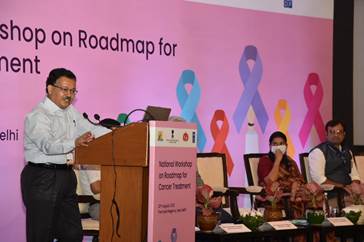New Delhi- A recent study published in Nature, world’s leading multi-disciplinary science journal, by leading experts reveals that the Swachh Bharat Mission (SBM), India’s ambitious national sanitation program, has contributed significantly to reducing infant and under-five mortality rates across the country – averting 60,000 – 70,000 infant lives annually. The study, which utilized a quasi-experimental design, provides robust evidence linking increased toilet access under SBM with improved child survival outcomes. Launched in 2014 by Prime Minister Narendra Modi, SBM is one of the largest national behavioral change sanitation programs in the world, aimed at eliminating open defecation by providing household toilets across the country. This unique programme has now metamorphised into ensuring Sampoorna Swachhata in the country.
Study Overview and Key Findings:
The study analyzed data from 35 Indian states and 640 districts spanning a decade (2011-2020), focusing on infant mortality rate (IMR) and under-five mortality rate (U5MR) per thousand live births as the primary outcomes.
Key findings include:
Inverse Association Between Toilet Access and Child Mortality: Historically, toilet access and child mortality have shown a robust inverse association in India.
Scale of Impact: Toilets constructed increased dramatically across India following the implementation of the SBM in 2014. Over 117 million toilets have been constructed since 2014 with a public investment of over 1.4 lakh crore. Results from the analyses suggest that for every 10 percentage point increase in district level access following SBM corresponds with a reduction in district level IMR by 0.9 points and U5MR by 1.1 points on average. There is further evidence of a threshold effect wherein the district level toilet coverage of 30% (and above) corresponds with substantial reductions in infant and child mortality. The study revealed that districts with over 30% toilet coverage under SBM experienced reductions of 5.3 in the IMR and 6.8 in the U5MR per thousand live births. In absolute numbers, this co-efficient would scale to 60,000 – 70,000 infant lives annually. This finding was supported by robustness checks and falsification tests, confirming the validity of the results.
SBM’s Unique Approach: SBM’s approach of combining toilet construction with substantial investments in IEC (Information, Education, and Communication) and community engagement represents a marked departure from prior sanitation efforts in India, which often lacked such comprehensive strategies.
Novel Evidence of Impact: The study provides novel evidence of reductions in infant and child mortality following SBM’s comprehensive national sanitation program, indicating its transformative role in improving public health outcomes.
Methodology: The study employed two-way fixed effects regression models to control for sociodemographic, wealth, and healthcare-related confounders at the district level, ensuring a comprehensive analysis of the relationship between sanitation improvements and child mortality.
Broader Public Health Benefits: The study also highlights that expanded access to toilets under SBM likely reduced exposure to fecal-oral pathogens, contributing to lower incidences of diarrhea and malnutrition, which are key drivers of child mortality in India.
Implications for Public Health and Future Directions:
The findings underscore the critical role of sanitation in improving child health and reducing mortality. The evidence from SBM’s implementation provides a powerful case for the continued expansion of sanitation programs as part of broader public health strategies. The study’s results suggest that future efforts should focus on sustaining behavioral changes and ensuring that constructed toilets are utilized effectively to maximize health benefits.











